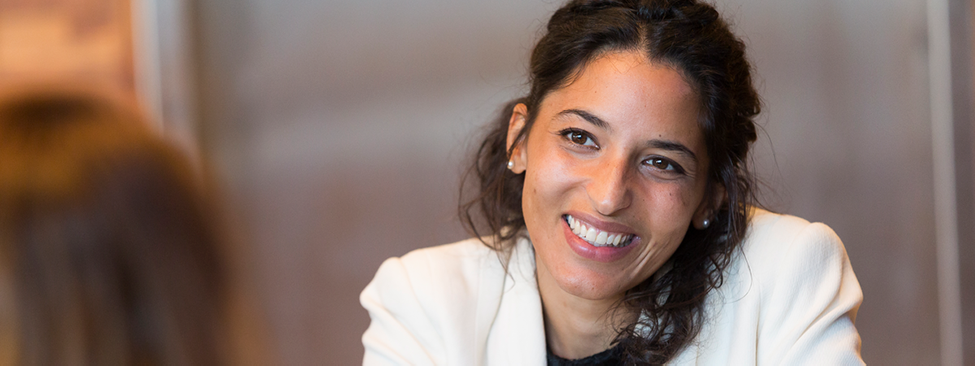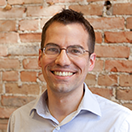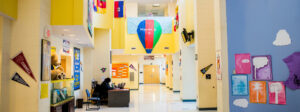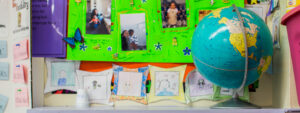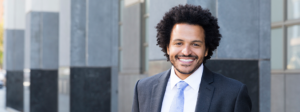Christine Nieves of Humacao, Puerto Rico was recently named one of TNTP’s 2019 Bridge Fellows. As a Fellow, Christine will build on her previous work with the community of Mariana to develop a climate change leadership curriculum to support the replicability and scalability of sustainable, youth-led centers across Puerto Rico where students engage in project-based learning and design solutions to local challenges caused by climate change. I sat down with Christine to learn about her path to the Bridge Fellowship.
Can you describe why you left Puerto Rico initially?
I never learned about Puerto Rican figures as examples of leaders, visionaries, or doers. Through the radio, news, neighborhood and family gatherings, I learned that we just weren’t capable of solving our problems, running our island, or frankly, running anything. “Without America,” I heard repeated over and over again, “we will never have jobs, or food, or funds for public services.” This idea became an unquestionable truth for me. When I left Puerto Rico for college, I carried a mix of conspicuous pride for being Puertorriqueña and disdain towards my fellow Puerto Ricans. We were lazy, and corrupt, I was sure of it, and I wanted nothing to do with any of it.
So, what brought you back?
One day, after ten years of educational and career achievements, I began feeling a sharp pain in my right shoulder blade. It was unexplainable. There’d been no injury, no history of back pain, nothing. I went to all the physical therapists I could find until one said, “People who feel this kind of pain often share that they lack a sense of community.” At the time, I had a dream job teaching design thinking to undergraduates at Florida State University and being the only Latina on the entrepreneurship leadership team for the new school that had just received an endowment. Everything was aligning. Except for one thing: I was too afraid to admit that I desperately wanted to come back to Puerto Rico, and simultaneously felt returning would be my biggest, most shameful failure.
But the pain kept getting worse. I had to cancel meetings because I couldn’t get out of bed. One morning I called my dad and asked if I could stay at our vacant house on the island while I got settled, and he said yes. That same day I walked to the dean’s office and handed in my resignation letter. I thanked them for this unparalleled opportunity and said that I just knew I would be a better instructor if I did this.
I returned to the island in December 2016.
How would you describe the work you’re currently doing?
Generally speaking, it’s community-based redevelopment and recovery. Rather than acting like I know exactly what we need, I’m asking questions. What would it take for our community to be a model of adaptability, specifically when systems collapse, as they did during Maria? I want to understand the assets and resources we have and activate those assets by connecting them to folks in the community.
What I'm moving towards is a shift from disaster response and recovery to preparedness and adaptability. I’m thinking about the next 150 years and ensuring young people have the skills, knowledge, and mindset they need to be ready to inherit the planet.
What brought you to this work?
Not even a year after I returned to the island, on Sept 20, 2017, the world changed for me, and for the 3.5 million Puerto Ricans living on the island. Our home was flooded and my now-husband and I lost almost all our furniture, clothes, books, technology—we’re still recovering. But out of this devastation, we decided we needed to do something. And to our surprise, that something would turn into Proyecto Apoyo Mutuo Mariana (PAM), a fully community-driven disaster response and recovery effort: kitchen, aid distribution, food delivery, arts, culture and recreation activities for kids, and a full transformation towards renewable energy sources, rain-water catchment systems, filters installed in natural water sources through the mountain, even solar-powered Wi-Fi and satellite communication. We also spent time reflecting on how our community (a so-called marginalized community) can support human adaptation to a changing climate.
Can you talk more about how you experienced those changes?
During the hurricane, my life became a dystopian future. There was no communication. You were lucky if you had a radio. If you got hurt, you couldn’t google how to care for a wound. The communication disconnection was so complete. We felt so alone.
On top of the technology breakdown, there was effectively no government. You couldn't call the police. You couldn't call the hospital. You couldn't drive anywhere because you wanted to save the little gas you had for a real emergency. We basically stayed put for two weeks.
It was hardest when we lost all our water. We had 2,000 gallons, which was enough to last about a month. And we lost all of it because the winds were so strong the pressure punched a hole through our cistern’s pipe. At the window, we had to watch 2,000 gallons of water spill out. We were helpless to do anything about it. And it hit me: every system we need to keep our communities stable is designed to have huge amounts of energy available.
Why are you currently focusing your work on young people?
I recognize that the youngest generation right now is very tech savvy. But what happens when they no longer have access to that technology? These are the young people responsible for building a sustainable future, and we clearly aren’t preparing them to do so. The hurricane—especially the loss of water—really shook me and made me realize our young people aren’t ready. This isn’t to say that the older generations are prepared for this sort of thing. We aren’t. But if we’re thinking about how to prepare for a future where climate change will only cause more disasters, it’s imperative we put young people at the center of whatever we do.
My focus is on ensuring that they learn and heal through creating systems to address both climate change and the resulting natural disasters. I want them to see these possibilities become real. I want them to see that there are solutions to climate change; that there’s hope.
What does success look like for you?
I want the prototypes and services these young people create to not only benefit our community in Puerto Rico but benefit communities worldwide. That’s a big part of what I want to do with the Bridge Fellowship. I want to find other people who are doing work like this and understand the mechanisms through which they are making education simultaneously about learning and creating solutions to challenges their community and communities around the world face.
I've already started a nonprofit that would house the project, so now it’s about mapping out how this project would work. I want to do it justice and not just impose my own ideas about what the program would look like. Is it a class? A club? A training? A series of events? I don’t know. There are so many ways it could take shape. So, after I get through this phase of information gathering and design, I want to apply what I learned and test out the model as soon as possible—with lots of people from local communities in Puerto Rico giving feedback and helping create a stronger future for all of us.
